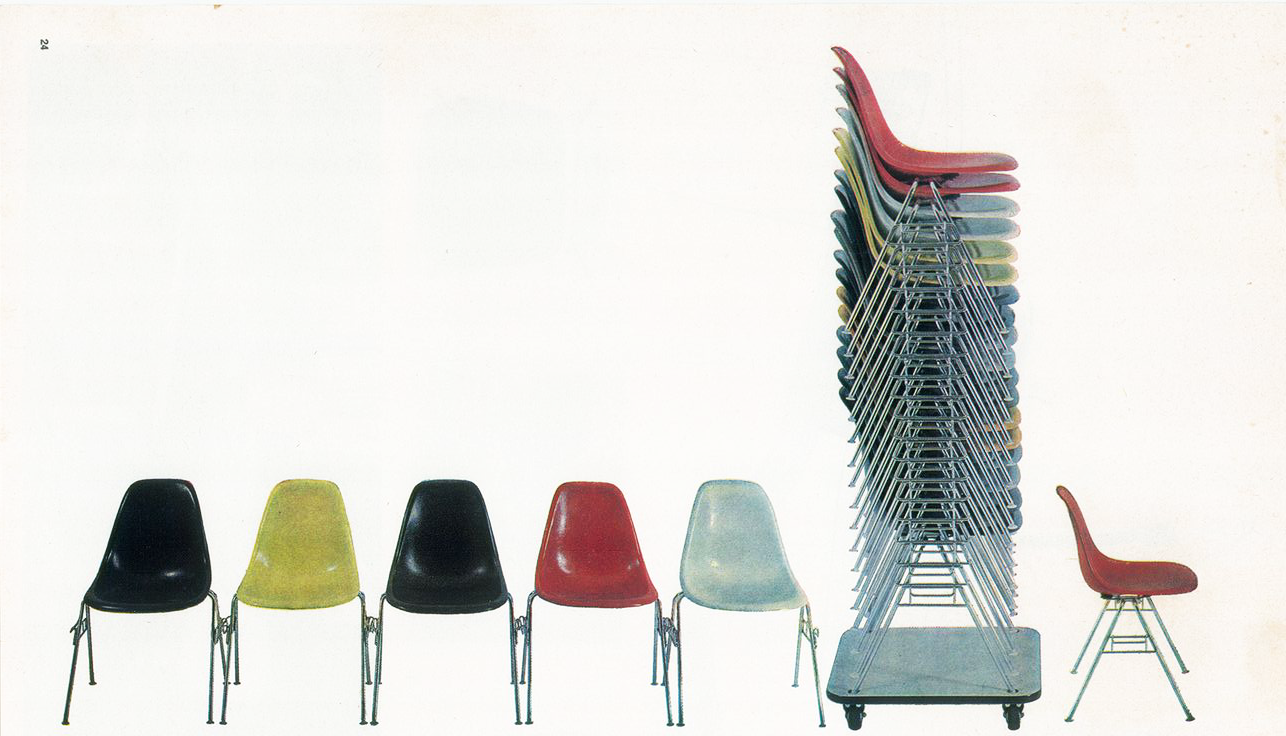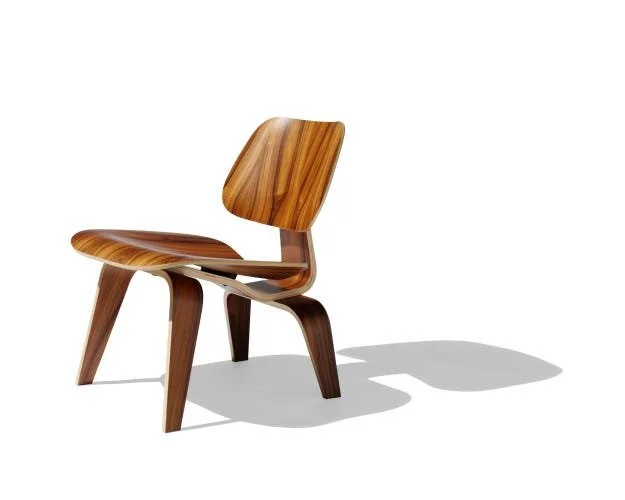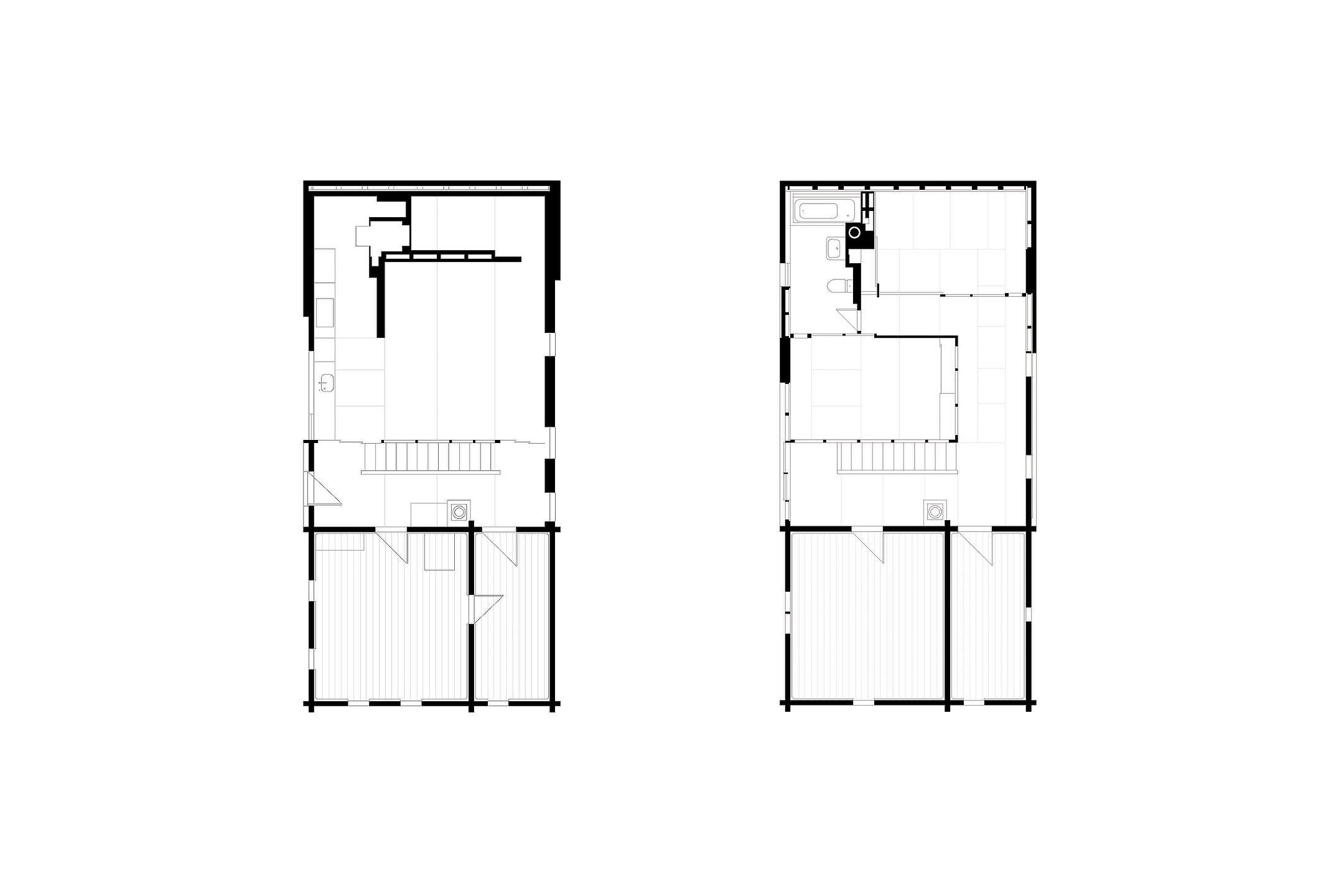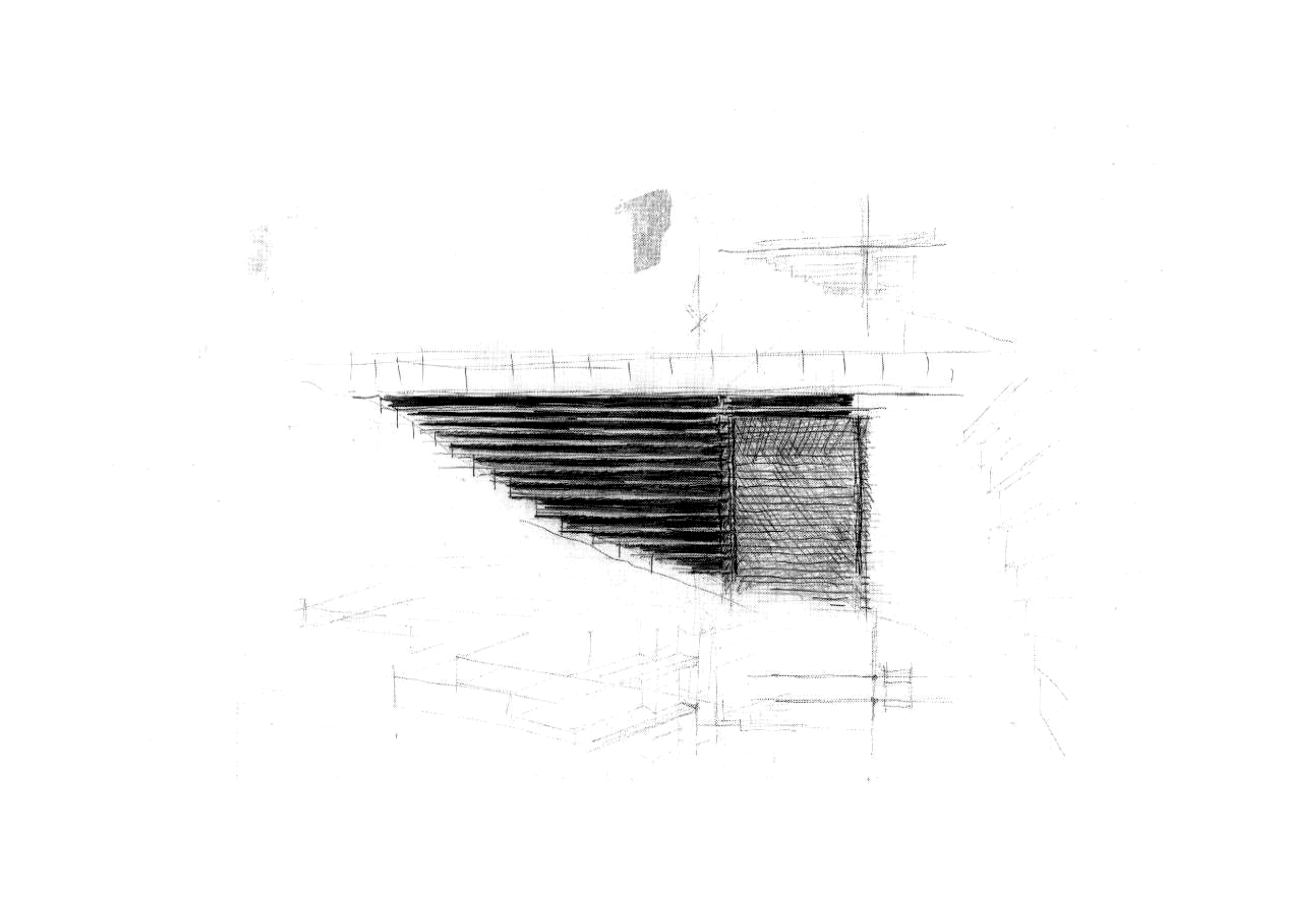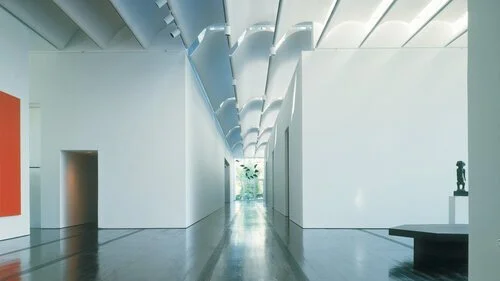In 1941, Charles was attempting to reinvent the very concept of a chair with his friend Eero Saarinen at the Organic Furniture Competition sponsored by the Museum of Modern Art in New York. With the assistance of Berniece “Ray” Kaiser, a painter, Charles and Eero won the top prize. Their victorious plywood chair design, however, could not be mass-produced as currently constructed. It splintered at the point where the back met the seat, frustrating their stated design intent of moulding a single piece of plywood into the shape of a fully functional chair.
Eames Molded Plywood Lounge Chair Wood Base (LCW).
The LCW was first made available to the public in 1946, and is still made in the same configuration today. By that year, four plywood adult chairs had been developed for market release as well as the child's nested chair. The Eames LCW Side Chair had a dining height sister chair (DCW) and the two were replicated with metal bases in the DCM and LCM. The group as a whole would soon become known as the ‘Eames Chairs’ and was marketed as such through the early 50’s.
The LCW was a fusion of five separate molded plywood forms. The support was made up of two curved legs of different sizes and a formed spine. The back rest and seat were then fixed to the support via rubber shock mounts.
Eames Fiberglass Armchair
Ray and Charles Eames released their molded fiberglass armchair in 1950, after creating it for the International Competition for Low-Cost Furniture Design, sponsored by the MoMA. The affordable fiberglass design was an answer to the limited financial and material resources available after WWII.
In its earliest form, this chair was molded plastic on an aluminum base, upholstered with fabric cushions. Eventually, the style expanded to offer a variety of finishes, bases, and upholstery options.
El proyecto del gimnasio del Colegio de Nuestra Señora de las Maravillas diseñado por el arquitecto Alejandro de la Sota fue construido en 1962 y responde a unos condicionantes muy particulares: un solar difícil, un programa amplio y variado, un presupuesto ajustado y un desnivel de 12 metros entre el suelo del colegio y la calle Joaquín Costa.
……In 1980, when Dominique de Menil met the Italian architect Renzo Piano, he was chiefly known for his collaboration with Richard Rogers on the Centre Georges Pompidou. That controversial building was the opposite of the equally innovative but low-key building that she envisioned for her Houston museum. The building’s cypress siding, steel, and glass are in harmony with its residential neighborhood and defer to the art on display. Piano gave her exactly what she asked for: a museum that seems “small on the outside but large inside,” with 30,000 square feet of gallery space illuminated by natural light filtered through the ingenious system of ferrocement leaves…..










































